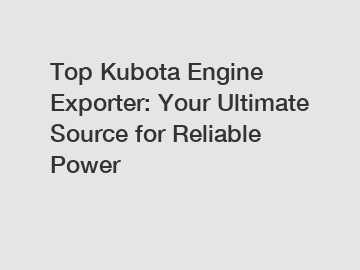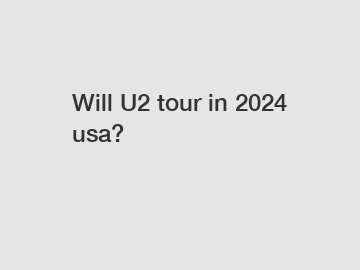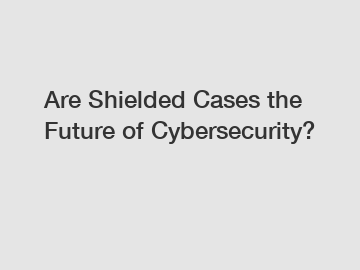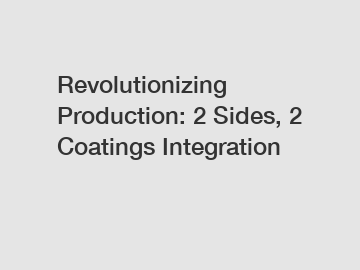Strategies to improve chiller plant performance, efficiency
Strategies to improve chiller plant performance, efficiency
For more information, please visit Ai Chiller Plant Optimization.
Learning Objectives
- Learn about the impact of pumping schemes and plant optimization of chilled water systems.
- Understand how and when to consider a waterside economizer.
- Review how and when to deploy a heat recovery chiller.
For many buildings, the chilled water system provides tremendous potential for creating energy savings. However, because of the role the chilled water system plays in thermal comfort of the building occupants, those potential energy savings strategies are not always pursued in favor of traditional approaches. It is possible to design chilled water systems that meet the thermal comfort demands of the building and achieve operational and energy efficiencies that can significantly decrease ongoing operational costs.
Chilled water distribution
The chilled water distribution system must be evaluated before a new chiller plant design or existing chiller plant upgrade can be finalized. There are several factors to consider including:
- Existing or proposed design delta T, or lower water return temperatures.
- Maximum and minimum chilled water supply temperatures.
- Type of chilled water system control valves, installed or proposed (three-way or two-way valves).
- Significant pressure drop differences in the chilled water piping distribution loops.
- Terminal equipment, proposed or installed.
The impact of these criteria will guide the chilled water plant production decisions and the most efficient pumping arrangement.
The most common types of chiller plant pumping arrangements are constant flow, primary-secondary variable flow and variable primary flow systems. For the vast majority of chilled water plants, the energy efficiency of the plant can be maximized by varying the pumping capacity to match the required thermal load. When the pumping capacity matches the thermal load, it increases the temperature difference between the chilled water supply temperature and chilled water return temperature.
This is known as the chilled water system delta T, and the higher the delta T, the lower the pumping energy required for the system. Increasing the temperature difference between the chilled water supply and return takes full advantage of the total capacity of the chillers; variable primary flow systems typically have a lower first cost than primary-secondary variable flow systems.
Upgrading an existing constant flow or primary-secondary flow chilled water plant to a variable primary flow chilled water plant that is connected to a distribution system with three-way valves would result in a constant flow system with a low delta T, for a large range of the chilled water plant's operation. Providing a variable flow chilled water plant that is connected to a chilled water distribution piping network with two or more substantially different pressure drops could result in significantly less pump energy savings and the potential for the existing control valves leaking by in the lower pressure drop chilled water loop.
Alterations in the existing distribution system are required in many chiller plant upgrades and they should not be overlooked in the proper design of an upgraded plant. Changing the three-way control valves to two-way control valves and evaluating the use of two-way pressure independent control valves will solve many of these distribution issues. The existing chilled water coils were likely not selected to perform with the edition of ASHRAE Standard 90.1: Energy Standard for Buildings Except Low-Rise Residential Buildings required 15°F temperature difference between entering and leaving water temperature.
Evaluating the existing chilled water coils at varying chilled water supply temperatures is required to determine if the coils must be replaced or what temperature differences can be achieved with the existing coils (see Figure 1).
Pumping arrangements
Once the chilled water distribution parameters are understood, the chilled water pumping arrangement can be designed. A variable primary flow pumping system is typically the most energy-efficient system and provides the benefit of fewer pumps in the system. Operating the variable primary pumps in parallel to match the optimum efficiency point on the chilled water distribution system curve is an effective way to minimize the system pumping energy.
Several pump manufacturers offer sensorless pumps with integral variable frequency drives that have the pump curves implanted in the pump VFD, and can operate single or multiple pumps at the most efficient point on the system curve. These pumps are a very cost-effective way to limit the number of field mounted sensors and controls while minimizing pump energy usage.
Variable flow condenser water systems are also a way to reduce the total pump energy used in the chilled water plant. Care must be taken when reducing the flow in a condenser water system to avoid suspended solids from settling out in the system. Minimum flow rates are important to maintain in the cooling towers to ensure that the cooling tower fill remains fully wetted. Minimum flow rates must also be maintained within the condenser section of the chiller. Even with the potential concerns, variable flow in the condenser water system is still a viable option and can further reduce the overall kilowatt per ton of chiller water produced throughout the entire range of plant operation.
Chiller plant optimization
Optimization is the action of making the best or most effective use of a situation or resource. What this means for a chilled water plant, as dictated by ASHRAE Standard 90.1 and the International Energy Conservation Code, is controlling the associated equipment, whether new or existing, to operate as efficiently as possible and ultimately consume the least amount of energy, while meeting the building needs. There are different levels of optimization currently being applied in the industry ranging from simple sequencing of the equipment to the installation of electrical usage metering to enable system adjustments in real time through software.
Currently, some controls manufacturers integrate plant optimization into their standard control package. This is typically limited to inputting project specific equipment performance data into the control software, which will, in turn, sequence a specified number of chillers, cooling towers and pumps based on operational 'sweet spots' to meet building load. This could also include using control sequences such as pump differential pressure reset and optimum start controls for systems using setback control.
The next level of optimization is through standalone software packages, which operate in the background using proprietary algorithms and work in conjunction with the building management system. This typically involves the installation of electrical energy usage meters for real time data collection in determining equipment sequencing as well as implementing predictive actions based on the software algorithms.
Equipment manufacturers are also starting to include aspects of optimization into their onboard controls as well. For example, a centrifugal chiller with multiple compressors having the ability to stage them on and off based on operating at the lowest kilowatts per ton possible.
From an owner's perspective, implementing some form of chilled water plant optimization can be appealing for a couple different reasons. For example, referencing strategies in ASHRAE 90.1, this could mean using pumps with integral VFDs for a variable flow system or using chilled water reset in a system with integrated waterside economizer as described in the section below. There is the obvious reduction in energy usage, which directly translates to dollars saved with the utility company.
Optimization is also appealing because it tends to prolong the life of the installed equipment. To truly understand the benefits of chiller plant optimization, it is recommended to complete a baseline analysis of the existing system or new installation to help validate the benefits to system performance. Establishing a baseline is an important aspect of this process especially as it relates to return on investment as there is a premium associated with chilled water plant optimization.
An important aspect to note is owner and plant operator buy-in to the software to allow it to operate as intended. For example, in a scenario where two chillers are operating, the software may sequence three chilled water pumps online where traditionally there may only be two. This would happen because three pumps operating at a lower frequency may use less energy that two pumps operating at 60 hertz. Scenarios like this can be difficult for operators to accept after operating in a more traditional way for many years.
The best results from optimization are achieved when all of the system equipment is sized appropriately to meet the actual chilled water demand and not over or undersized. It is common that equipment in older chilled water plants were selected based on the peak load and not the total operating range of the plant. Those plants were often designed as constant volume systems, so a load study that considers the actual program of the building is recommended before sizing a plant upgrade and/or replacement.
The load study for a new building is easier to achieve. Understanding the actual building load so that equipment can be right-sized is critical. This allows the software to sequence the equipment so it can operate most efficiently for longer periods of time throughout the year, thus providing a greater overall percent reduction in energy usage.
Waterside economizer
Waterside economizer uses the evaporative cooling capacity of the cooling tower to produce cold water that is exchanged through a heat exchanger to provide chilled water that offsets the need for mechanical cooling. In climate zones without significant year-round high relative humidity, integrated waterside economizers can provide significant energy savings by reducing the hours of operation of chillers and by reducing the chiller load during hours when 100% economizer isn't possible.
The benefits of waterside economizers increase with warmer chilled water supply temperatures, so they pair especially well with hydronic systems such as radiant cooling, chilled beams and dedicated outdoor air system fan coil boxes, where air-side economizers are either not applicable or not feasible.
In other scenarios where traditional air-side economizers are not ideal, such as climate zones where an outside air economizer would introduce too much dehumidification load or mission critical data centers where excessive outside air may reduce the interior relative humidity too low, waterside economizers may be used to achieve significant savings. Like all heating, ventilation and air conditioning system selections, it is important to understand the impact on all systems together, including building enclosure, building massing, load profile and occupant comfort expectations.
When waterside economizers are optimized alongside each of these influencing systems, then the potential benefits of waterside economizing only increase (see Figure 2).
Traditional chilled water systems
Traditional chilled water systems producing 42°F to 44°F chilled water will be limited in how many hours they can take advantage of 100% waterside economizer, especially when the engineer has specified a traditional cooling tower approach of 6°F to 7°F and required a plate and frame heat exchanger with its 1°F to 2°F approach. This may leave the system able to operate at 100% economizer mode only when wetbulb temperatures are at or below 36°F. A traditional chilled water design approach in a building with high internal loads, such as an office building results in a low percentage of operating hours that can be used for 100% economizer mode.
Although cooling tower cost goes up as the cooling tower approach decreases, each project team should evaluate the cost benefit analysis to select close approach towers in the 2°F to 3°F range. This increases the number of full economizer hours and will further reduce the operating hours on the chillers and their corresponding energy use.
Mild temperature chilled water systems
The real beauty of waterside economizers is on display when they are paired with mild temperature chilled water systems. Instead of operating in the 42°F to 44°F range, these systems tend to operate around 54°F to 58°F and supply radiant cooling systems, chilled beams or sensible only DOAS fan coil boxes. Typically, these systems are working in parallel with a DOAS system, which is handling dehumidification with a direct expansion system or standalone low-temperature chilled water coil supplied by a separate system.
As radiant systems, chilled beams and DOAS fan coil boxes are designed for sensible cooling only, they do not require low-temperature chilled water and in fact don't want chilled supply water temperatures which could result in condensation. So, the elevated chilled water temperatures are ideal. These increased supply water temperatures greatly increase the available hours for 100% waterside economizer, showing economizer hours with a traditional approach cooling tower (see Figure 3).
When you pair these systems with close approach towers, you can see dramatic increase in hours of full economizer mode. This brings the total hours available for full economizer up over 80% of hours in Oakland, Calif. (see Figure 4).
Advanced waterside economizer strategies
Besides selecting close approach towers, there are several other strategies that can be deployed to increase waterside economizer hours, reduce chiller hours and possibly eliminate the need for compressor cooling all together. The first strategy is a chilled water supply temperature reset control sequence (ASHRAE 90.1- Part 6.5.4.4), which should be deployed on all waterside economizer systems.
In this scenario, the BMS monitors all cooling valve positions. As soon as all chilled water valves are less than 100% open, the BMS will linearly reset the chilled water supply temperature upward until the first valve must open 100% to satisfy the local load. This can result in significant increased hours with full economizer, especially in buildings with high-performance enclosures and most buildings in the shoulder seasons, when envelope loads are low.
Additionally, waterside economizer systems pair well with thermal energy storage systems, especially mild temperature systems serving sensible only cooling systems. Thermal energy storage systems maximize the use of nighttime charging of the storage tanks when outside wetbulb temperatures are at their lowest, allowing for low cost chilled water production using nighttime off-peak power rates. If the building has been designed to be a low-load, high-performance building, teams may be able to install sufficient thermal storage to remove the need for chillers altogether to meet the sensible building load.
Although the typical thermal storage medium is water (or ice for low-temperature chilled water systems), recent research from the University of California, Berkeley's Center for the Built Environment has shown significant flexibility in mass-radiant cooling systems to support load shifting through controls manipulation alone and the inherent thermal mass of the slab. That flexibility has shown that in some instances, active cooling into the slab may shift upward of 12 hours separation from the time of peak load in the space, while still keeping the space operative temperature with the comfort range expected by ASHRAE Standard 55: Thermal Environmental Conditions for Human Occupancy.
Adding ceiling fans into the space, which with modest air-speeds support thermal comfort even up to 78°F room setpoints may increase that load shifting flexibility even more, potentially allowing 100% of cooling hours to be met with full waterside economizer.
Heat recovery chillers
Heat recovery chillers can provide energy savings in facilities where there is a need for simultaneous heating and cooling, such as hospitality and health care facilities. While six-pipe, dual-condenser heat recovery chillers are available, this discussion focuses on four-pipe, single-condenser heat recovery chiller applications.
A standard water-cooled chiller operates to remove heat from a chilled water loop and transfers that heat into a condenser water loop. The heat is then rejected from the condenser water loop to the outdoors by a cooling tower. The waste heat that is normally rejected to the outdoors can be recovered and used in applications where heat is required, such as heating domestic water or terminal reheat.
A heat recovery chiller is designed to provide both heating hot water and chilled water. The waste heat that is removed from the chilled water loop is captured in a hot water loop that is used for heating. When specifying a heat recovery chiller, it is important to consider the baseline heating and cooling load profiles of the building to properly size the heat recovery chiller.
When considering a heat recovery application, always select the lowest practical heating temperature to meet the needs. Space heating systems are normally designed at 140°F supply water temperature. Typically, heat recovery chillers are designed to provide hot water for space heating at 105°F to 110°F. To accommodate this lower water temperature, terminal reheat systems can be designed to operate with 110°F water when specified with higher capacity, multiple row heating coils.
Another application such as service water preheating normally uses heat recovery water temperatures of 85°F to 95°F. Selecting the lowest practical heating temperature reduces the chiller lift and results in the chiller operating more efficiently.
Heat recovery chillers can be very effective in health care facilities. Hospitals typically have large variable air volume air handling units that provide cooling and dehumidification and deliver air at a temperature of approximately 55°F. To help with infection control, clinical spaces within health care facilities are required to have minimum air change rates. As a result of minimum air change rates, rooms are often provided with more air than is needed for cooling the space. To counter this overcooling, terminal reheat is required. As a result, reheat energy has historically been one of the largest end uses of energy in a hospital, representing 25% to 30% of the total annual energy usage depending on the climate zone.
A heat recovery chiller that is sized to provide the terminal reheat load during summer operation can offset the reheat load entirely while also providing chilled water and reducing the demand on the main chiller plant. During winter operation, the heat recovery chiller can operate to meet the process cooling loads of the hospital while also providing hot water to reduce the demand on the boiler plant. Essentially, the building owner gets heat energy at virtually no cost because it is a byproduct of the cooling process.
Chiller plant design can have a significant impact on the ongoing operating costs of a building. Strategies such as chiller plant optimization, water side economizer and heat recovery chillers can create positive results by improving overall plant efficiency and reducing energy costs. The type of building, climate and load profile are contributing factors into whether one or all of those strategies should be considered.
Do you have experience and expertise with the topics mentioned in this content? You should consider contributing to our CFE Media editorial team and getting the recognition you and your company deserve. Click here to start this process.
Explore more:10 Things to Consider When Buying 8000A Air cooling high frequency Rectifier leading
How much weight can a scaffold jack hold?
What are the 4 types of material handling equipment?
Top 5 Tips to Maximize ROI with Professional 1 Side 1 Coating Line?
Revolutionizing Offshore Drilling Safety: Spherical Annular BOP"Should spherical annular BOPs be mandatory?
How Induction Works: Is it Revolutionizing Home Cooking?
Top 10 Must-Have Tractor Implements for Efficient Farming
If you are looking for more details, kindly visit Custom Chiller System.
Improve Chiller Efficiency
In this article we're going to be discussing different ways to improve the efficiency of your existing chiller setup. We're going to cover Compressor Retrofit, Compressor VFD, Chilled Water Reset, Condenser water reset, Condenser and Evaporator cleaning, Expansion Valve, Air cooled chiller, condenser fans, Free cooling or Economiser cooling, Chiller and plant sequencing, Controllers and fittings, Cooling tower, Pumps and AHU fan VFD's
Scroll to the bottom to watch the video tutorial on this article
Need to improve the efficiency of your exisit chiller? See the wide range of Danfoss chiller solutions at Chillers.Danfoss.com
Danfoss has a wide portfolio of products to you boost efficiency in whatever chiller system you're working with. Their products include compressors, AC drives, system protectors, heat exchangers, valves, electronics, and sensors. They're committed to helping you build better chillers ' from the inside out. Learn more at Chiller.Danfoss.com
In most applications, chillers are the single largest energy consuming piece of equipment within a building. There's a lot of pressure on engineers as well as building and facilities managers to reduce the energy consumption and carbon footprint of buildings so chillers are naturally going to be in the focal point for this. We'll have a look at both low-cost options as well as some potential projects to help achieve this.
How Chillers use energy
How Chillers Use EnergyLet's first consider how energy is used in chillers. First we have the compressor, this takes low pressure refrigerant and compresses it to a higher pressure, for this to work we input electrical energy represented by Qein.
As the refrigerant moves it takes away the buildings unwanted thermal energy from the evaporator so we have thermal energy entering the system here represented by Qthin.
This is then rejected from the condenser so we have energy leaving the system here represented by Qthout. We also have fans on air cooled chillers which run to force the unwanted heat to dissipate, so we have electrical energy entering here also represented by the Qein.
The condenser and evaporator are heat exchangers and they are exposed to water, dirt and biological growth which cause restrictions to the heat transfer. This results in reduced performance and increased energy consumption to achieve the design criteria.
Between the evaporator and condenser, we have the expansion valve which maintains the pressure differential between the high and low pressure side, this also controls the flow of refrigerant into the evaporator and ultimately the compressor.
Then we have the controls and fittings that dictates how the system works.
So we have lots of components which are all playing their part in the system to change and control the movement of thermal energy and pressure at different points. All of these play a part in how much energy the chiller will consumer.
Let's work our way around the system to consider different ways to reduce the energy consumption for chillers. I do just want to point out that the estimated energy savings listed for each of the items is for the individual implementation, you can combine the steps mentioned but the potential savings will not simply add together, they will diminish.
The first area we'll consider is the most energy intensive part, that being the compressor. In our previous video we looked at chiller types and applications where we covered the different types of compressors, the applications and efficiency. Check that out as it will help with your understanding, additionally I highly recommend checking out of Essential Chiller Terminology article and video tutorial which will help you become fluent in chiller language.
Compressor retrofit:
Compressor RetrofitIn many cases the compressor of a chiller is able to be retrofitted with a newer technology. Check with the chiller manufacturer or your chiller service specialist if your chiller can be retrofitted. If so, the payback can be very quick. For example, replacing a fixed speed scroll compressor for a variable speed compressor can lead to a ~9% reduction in energy consumption. The biggest factor affecting the savings is how much of the year does the chiller operate at part load. If it's at full load for most of the year then there will be little to no saving however if the chiller operates at part load for the majority of the year, which the majority of chillers do, then there is a big potential here for energy savings.
Compressor VFD retrofit:
VFD Compressor retrofitIf it's not feasible to replace the compressor, VFD's or variable frequency drives can often be fitted to the compressor, allowing the chiller to perform more efficiently at part load conditions. The efficiency at full load however will be reduced because of the losses from the inverter. Most chillers will operate at part load conditions for the majority of the year so this is an attractive option. Retrofitting a VFD can often lead to energy savings of around 20% Important: Not all compressors can be retro fitted with a VFD, for example scroll compressors should be replaced with VFD compressors instead of trying to retrofit. Check with a local specialist for compatibility.
The next part is to consider what the chillers compressor does and how its linked to the operating conditions of the evaporator and condenser. Remember it takes a low pressure refrigerant and compresses it to a high pressure. This is what the electricity is used for. So lets look at some ways to reduce this.
Chilled water reset:
Chilled Water ResetThe chilled water outlet temperature was traditionally fixed, usually somewhere around 6°C or 42.8°F but it's common practice now to apply a chilled water reset strategy. The chilled water reset allows the temperature of the chilled water to be increased during part load conditions. This reduces the amount of work done by the chillers compressor.
The increase in chilled water temperature results in an increase in evaporator pressure of the refrigerant. The compressor takes the refrigerant at the evaporator pressure then compresses it and increases its pressure to the condensers pressure, so the higher the evaporator pressure the less work the compressor needs to do to increase that pressure.
As a rule of thumb, the chiller efficiency can be increased by 1-2% per degree C the chilled water temperature is increased.
There are lots of ways to implement this, you should first check with your chiller manufacturer if this is applicable to your chiller and ask what temperature or pressure limits should be imposed. If it is applicable then you can start to decide what will be the deciding factor for temperature change because there are many ways to do this.
We won't go into too much detail on that in this article but some common options are to control based on outside air temperature, to control based on the actual load, both sensible and latent heat or to control based on the average or highest demanding vale position on the cooling coils.
Before implementing chilled water reset, its important to consider
- The chilled water pumps will increase in speed for variable volume systems, to meet the cooling load. The optimal point should be calculated to make sure the increase in pumping power doesn't offset the savings from the chiller.
- The cooling coils are often used for humidity control. The temperature of the chilled water is crucial for this so check if this is applicable to your system.
- Check if the chiller manufacturer recommends any temperature and pressure limits for the water or refrigerant.
Condenser water reset:
Condenser water resetThis can only be implemented on water cooled chillers as air cooled do not use condenser water. This is very similar to the chilled water reset we just looked at, by reducing the temperature of the condenser water you will reduce the amount of work the compressor needs to do because the decrease in water temperature will result in a reduction in condenser refrigerant pressure.
Again, as a rule of thumb you can save 1-2% per degree C reduction. Usually the condenser water return temperature setpoint is fixed at around 27°C or 80°F and the cooling tower fans or bypass line adjust to control this temperature.
Some regions of the world with temperate climates will be able to reduce the condenser water temperature as the outdoor wet bulb temperature decreases. This will reduce the condensing pressure of the refrigerant so the compressor has to do less work. There are limits on how low you can go though, eventually the chiller will shut off to protect itself so check with the manufacturer first before doing so.
Cleaning the chiller
Cleaning a chillers evaporator and condenserThis should be a fairly obvious one but you'll find buildings that have either never cleaned their chillers heat exchangers or they do it infrequently.
Every chiller is designed to have some amount of fouling but over time biological growth, dust, foreign particles and internal particles from corrosion will build up and line the surfaces of the pipes and heat exchangers causing the pumps to work harder but also reducing the ability of the heat exchanger to transfer thermal energy between the water and refrigerant.
Appropriate water treatment should be carried out to maintain the system, you should contact a local water treatment specialist to determine the correct chemicals and dosing intervals. Additionally, the condenser and evaporator should be physically cleaned periodically.
For condensers connected to open cooling towers then its good practice to clean these annually.
For evaporators and condensers on closed loops then its good practice to physically clean every 3 years.
The amount you can save really depends on how much fouling has built up on the surfaces. Cleaning heavily fouled chiller could lead to an energy saving of up to 10% where as a lightly fouled chiller would see 1-3% improvement. This is going to depend on how much fouling builds up as well as how long the chillers run. Its best to keep a daily log of operating conditions to compare the performance overtime, this will indicate when its economical to isolate the chiller and clean it.
Don't forget to also clean the fins on the condenser of an air-cooled chiller. Over time these can accumulate dirt, dust, pieces of trash, animal nests and biological material which builds up on the surfaces and reduces the heat transfer effectiveness.
Expansion valve:
Upgrade expansion valvesMany chillers use a thermal expansion valve to control the flow of refrigerant into the evaporator to achieve the desired superheat.
If you want to know how TXV's work we've previously made a very detailed animation video, click here to see.
The thermal expansion valve can be replaced with an electronic expansion valve which will provide much more stable superheat especially at low loads and because its digital it's able to respond to changes and control the super heat with greater speed and precision.
It does this by measuring both the pressure and temperature at the outlet of the evaporator. The precision allows the condensing pressure to be reduced so the compressor therefore doesn't need to work so hard. By replacing a thermal expansion valve with an electronic expansion valve, energy savings of around 14% are possible but this varies on the loading of the chiller.
Air cooled chiller, condenser fans
EC fan upgrade on Air Cooled chillerAir cooled chillers will use condenser fans to reject the heat. These are often controlled to run either 100% off or 100% on with no variations between. Sometimes these fans are grouped together to provide cooling stages especially on larger units. These fans can be replaced with EC or electronically commutated fans which allow the fans to vary speed and airflow. This provides a much more uniform airflow over the condenser coils and also allows energy savings. Replacing the fans of an air cooled chiller with EC fans can lead to around 6% energy reduction.
Free cooling or Economiser cooling
Chiller free coolingThis is a very popular choice for data centers but it can and is also used for commercial buildings. It involves removing the unwanted heat from the cooling system without the use or with minimal use of the compressors. This isn't possible in all locations it can only be used when the out door air temperature is below the chilled water set point temperature.
Using a free cooling or economiser strategy allows the chillers compressor to be turned off, however the pumps and fans will still run and will likely run at high speeds so some of the savings from the compressor being off are offset here. Using a free cooling cycle could reduce the chillers annual energy consumption by 20-50% again this really depends on the local ambient conditions and setpoint temperature.
Air cooled chillers sometimes have a free cooling feature built in which uses the fans without the compressors if conditions are right, but I've came across some installations where this hadn't been commissioned so check with the manufacturer if this feature is available or if it can be retro fitted.
Free air coolerAlternatively air cooled condensers can be fitted into the system to use just ambient air to remove as much heat as possible before reaching the chiller.
For water cooled chillers a common approach is to connect the condenser circuit and the chilled water circuit via a plate heat exchanger to directly transfer heat.
Controls, Controllers and fittings
Where possible choose digital controllers and sensors as these can perform faster and with more precision. When replacing a fitting check with manufacturers whether there are more energy efficient and reliable fittings available. With both fittings and controls equipment, over time manufacturers will stop manufacturing parts which means it becomes harder and more expensive to obtain spare parts from third parties. Do stay on top of this and do not just replace like for like, always seek improvement.
On the controls side, the manufacturer will quite often release new software updates periodically for the controllers and equipment, make sure the service and BMS engineer or servicing company is updating your systems, where possible, as this will allow the controllers to operate more effectively and without bugs. If you use a third party to service your chillers, pressure them to come up with new energy saving controls strategy not just for the chiller but also how it interacts with the entire cooling system. You can ask for this as part of their normal service or for a contract renewal or just ask them to provide quotations for improvements.
Chiller & plant sequencing
Chiller plant sequencerThe chiller, cooling towers and pumps all have different efficiency curves especially at part load conditions. A plant sequencer can be used to ensure that the most efficient combination of plant items is used to match the current cooling load. The sequencer can be either just for the chillers or more advanced ones will include all the associated large plant items.
If you opt for the combined plant sequencer then it's possible to reduce the entire systems energy consumption by around 20% sometimes higher but this depends on how bad the controls strategy previously was and how efficient your plant items run at part load.
Cooling tower, AHU and pump VFD
Induction motor VFDThe cooling tower fans, chilled and condenser water pumps and AHU's all use induction motors. Although these are not part of the chiller they are part of the cooling system which the chiller is serving and how they work will affect the performance of the chiller. These motors can easily be integrated with variable speed drives to produce large energy savings. You'll often find that the pumps and fans are providing a higher flow rate than the system was designed for, you can check the buildings commissioning data for this. These plant items are typically oversized by 5-20% so fitting VFD's allows these to be ramped back to closely match the design.
Additionally with some sensors and controls the VFD's can be used to suit the actual load and vary the speed to accurately match this. Using this method can typically lead to a 30% reduction in energy consumption per motor.
The company is the world’s best Small Temperature Difference in Chillers supplier. We are your one-stop shop for all needs. Our staff are highly-specialized and will help you find the product you need.
Is investing in a high-quality animal food cutting machine worth it for your business?
Which screw press machine quotes offer the best value?
Revolutionize Your Plastic Production with FangtaiPlasticMachine.com
Should you opt for a sintered metal disc?
What is the purpose of the high pressure pump?
Mastering Precision: A Guide to High Precision Lathe
Revolutionizing Safety: New Radiation Sensors - Are They Effective?










